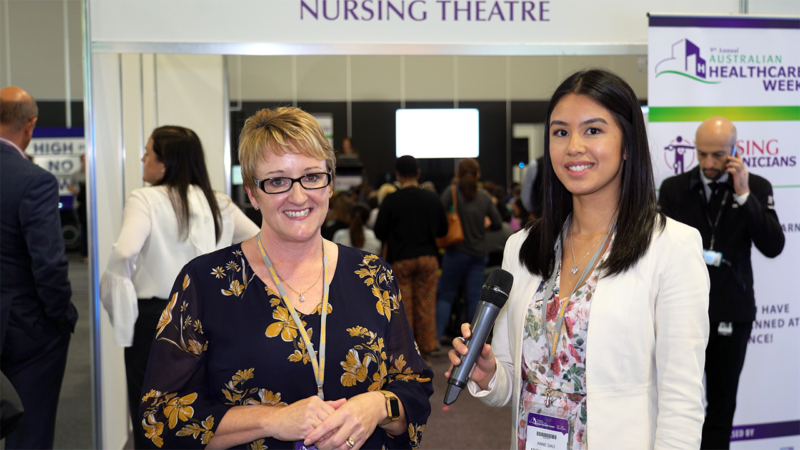Australian Health Journal met with Commissioner Catherine de Fontenay from the Productivity Commission to discuss the key findings of new research papers, “Advances in Measuring Healthcare Productivity”, released in April and in May, the release of “Making the most of Technology in Healthcare”.
De Fontenay talks about the Commission’s new approach to analysing health productivity, shifting the perspective from the unit measurement of individuals using the health system to the actual improvement of health. This has shown Australia’s health treatment productivity is improving, but identifies gaps in preventative health measures and duplication, where digital technology needs to be more effectively used.
The “Advances in Measuring Healthcare Productivity” research paper emphasises the productivity of healthcare by examining the outcomes of health treatments, such as those for lung cancer, and exploring the possibility of lower-cost settings for treatment, such as home-based care. This approach resulted in a notable 3% increase in productivity annually, showing improved health outcomes and enhanced value for money.
While the research highlights the improving productivity of health treatments, it also emphasises the importance of addressing the factors leading to illness, particularly in light of Australia’s high rates of obesity and alcohol consumption. By tackling these issues, substantial reductions in healthcare costs can be achieved. The research also identifies digital technologies as a promising avenue for cost reduction in healthcare, particularly in minimising excess testing and delivering care in more cost-effective settings.
When accounting for health risks in the population, Australia ranks third among 28 comparable high-income countries in terms of healthcare value for money, indicating the country’s strong performance using this method of measurement.
The second research paper “Making the most of Technology in Healthcare”, underscores the detrimental impact of inadequate electronic medical records on patient care quality, citing preventable medication-related errors costing approximately $1.4 billion annually. Additionally, it emphasises the significance of effective electronic discharge processes from hospitals in reducing the risk of readmission.
The research has advocated for the effective utilisation of digital technologies, including electronic medical records, telehealth, remote care, and artificial intelligence, in the healthcare system. It highlights the potential of these technologies to significantly reduce costs, citing potential savings of about $5 billion for hospitals by reducing test duplication and expediting patient discharge.
Remote monitoring technologies can reduce complications for high-risk diabetes patients, but funding structures need to be improved to maximise their benefits. To that end, the research emphasises the potential of digital technologies to revolutionise the healthcare system, provided that effective utilisation and appropriate funding structures are in place.
You Might also like
-
Australian Healthcare Week Hospitals and Clinics New Content Patient Experience Planning, Culture and Growth
Sonia Marshall – South Western Sydney Local Health District
South Western Sydney Local Health District serves nearly 1 million people in a rapidly growing area of Sydney. Currently 250-300 families a week are moving into the region and with a growing population, the health district requires well executed strategy and delivery of healthcare to the population. Executive Director Sonia Marshall spoke with Australian Health Journal reporter Anne Dao at last week’s Australian Healthcare Week in Sydney, on supporting staff and the community. Sonia highlights the mission of delivering Safe Quality Healthcare at all times. In-time patient feedback is important and the SWSLHD has implemented a system called “My Experience Matters” to give near immediate response from patients on their level of care, whilst they are still on site at the hospital. The aim of the initiative is to quickly identify bad experiences that could be rectified.
Post Views:
3,063 -
A clinical research career working Sponsor-side, CRO-side to Site-side
In July 2025, Paratus Clinical, a Australian provider of dedicated clinical trial services, announced the appointment of Megan Morrison as its new Chief Executive Officer, at the same time as a significant milestone as the company celebrating over a decade of impact in the clinical research space. Paratus now operates a network of five purpose-built, research-only clinics along Australia’s eastern seaboard.
-
Elevating Professional Standards in the Medtech and Pharmaceutical Sector
ARCS Australia Ltd, the peak body representing professionals in the MedTech and Pharmaceutical sector, this week announced a series of significant changes at its annual conference.
Dr Tim Boyle, CEO of ARCS Australia Ltd speaking to Australian Health Journal says, “These initiatives are central to strategy to build professionalism within the sector, increase capability and enhance the professional standing of its members.”



